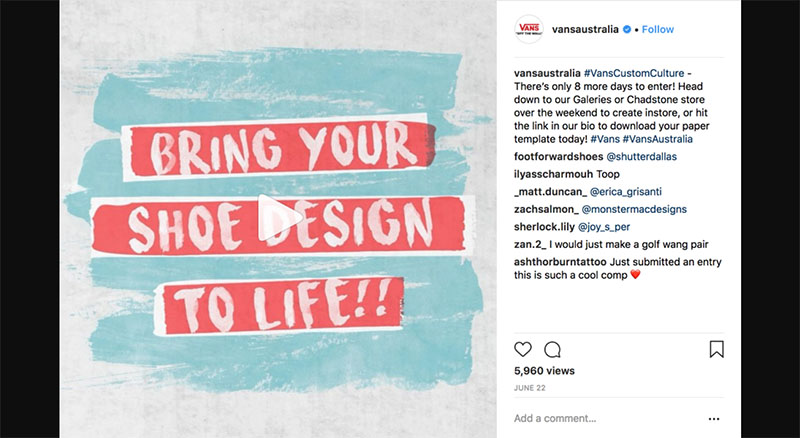16 Mar

Unknown to many, social media copywriting is a challenging task. There’s nothing wrong with writing it yourself, but there’s a reason why people leave it to the pros. According to Content Marketing Institute, 73% of companies hire professionals to craft their content strategy.
This data shows that copywriting is a serious business. If your writing isn’t getting the results you expect, it’s time to reword. Here are the top tips to make your social media copywriting bring in the sales.
What is Social Media Copywriting?
There are many types of copywriting, so let’s understand what exactly social media copywriting is before we begin. It is the process of writing, editing, and publishing content specifically for social media platforms. It is writing with the intention of persuading social media followers to like, share, follow, and ultimately, to purchase.
Why is Social Media Copywriting Important?
Whatever social media platform your brand is using, great copywriting can give you so many benefits. Here are a few:
- It builds brand awareness
- It engages your fans or followers
- It sells your products or services
Effective copywriting for social media gets you more likes, shares, comments, and practically free advertisement. Follow our tips below before getting in front of over 3.6 billion people on social media.
Check Your Grammar and Spelling
Accurate grammar and spelling matter! We can’t stress this enough, as we can see from a study conducted by Real Business. It tells us that 59% of the respondents admitted to avoiding websites with obvious grammar and spelling mistakes. This would work the same for social media as consumers are more discriminating now more than ever.
Use the PAS Formula
Seasoned copywriters use the PAS formula to create copy that gets results. This formula is an acronym for the following:
- Problem
- Agitate
- Solve
The first step is to identify a problem or a need that your followers have. Next is to stir them up to make them feel an urgency in finding a solution for that problem. Then tell them how your brand is what’s missing in their lives.
Keep It Short and Simple
With so much going on for social media platforms, it’s imperative to keep your copy short and simple. Otherwise, people will just scroll through your post. With so many things to see and watch, people won’t have time to read through long blocks of text.
This Facebook copywriting example from Eat Drink SF is perfection:

Write Original Content
This may seem redundant, but originality should always be present in all your social media copywriting. This gets attention quickly, especially when you write valuable content. When a prospect sees your copy that they already read elsewhere, it isn’t very likely that they’ll stay.
Write with a Purpose
Before writing that copy for social media, ask yourself the following questions:
- Where will this copy appear?
- Who needs to read it?
- What do I want to achieve with it?
By knowing what your copywriting goals and objectives are, answering these questions will go smoothly. This will then lead you to write better and more relevant content. Take inspiration from this ad from Udemy.

Write a Story
Writing copy via storytelling is a great way to be on a personal level with your target audience. A good story has the ability to create memories, which is excellent for creating recall for your brand. It engages your readers as they become emotionally invested in your copy. You can see this in this Coca-Cola advertisement on Facebook.

Write Depending on the Platform
How you write should depend on where you are writing. Your tone of voice and choice of words should match the platform you’re in. When you write for LinkedIn, you should sound business-like. This is opposed to writing for Twitter that should be short, fun, and casual.
Rethink Your Captions
Social media captions are the counterpart of headlines for news and blog articles. They lure the readers in, so make sure they’re poised to kill. Better yet, use your captions as calls to action, such as what Vans did here:

You’re putting your words to good use while using every possible avenue to sell your brand. As they say, if you don’t ask, you won’t get a reply.
Be Careful with the Hard Selling
You’re on social media, therefore, socialize. Tone down the hard sell and have fun while persuading people to buy you. A perfect example of this is this Instagram ad that Spotify released. It urges you to subscribe in an amusing and engaging way:

Focus on the Benefits
For your social media copywriting to be effective, focus on the benefits rather than the features. When introducing a new product or feature, it’s understandable to be excited about it. But you shouldn’t focus on that. You should always have the customers in mind when writing ad copy.
Your copy should answer a potential customer’s question, “What’s in it for me?” It would be great to see that the new smartphone you’re selling has high RAM. But if you say that this will allow them faster games and searches, you’ll get them more interested.
Use Strong Action Verbs
Clear and concise copy entails strong action verbs. It also gives your copy movement and dominance. Instead of saying, “The wine was drunk by the lady,” say, “The lady drank wine.”
In addition, writing in the passive voice can seem weak. Plus, it takes more words to say what you mean. In social media, where word count is limited, this is a skill you need to master.
Try Using Emoticons
According to WordStream, a Tweet with an emoticon in it increases engagement by 25%. Sprout Social tells us that Facebook posts that use emojis increase shares by 57%. If you haven’t done so, it’s time to reword your content to include emoticons and emojis. ¯\_(ツ)_/¯
Final Thoughts
It’s actually not what you say that matters, but how you say it. Words have the power to make people do what you want them to do. A little experimentation, practice, and research go a long way to come up with the best social media copywriting.










